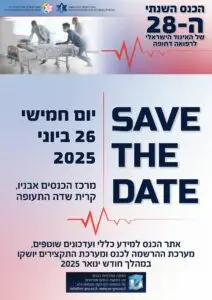פוסט זה זמין גם ב:
English
עברית
Abstract
Background Patients with mental health-related complaints are a key driver of increasing emergency medical service (EMS) demand; however, they require minimal intervention by EMS personnel. We describe the outcomes of a video telehealth study by mental health nurses (MHNs) in an EMS call-taking centre.
Methods This was a prospective study of adult (≥18 years) EMS callers with non-urgent mental health concerns in Victoria, Australia who underwent secondary triage between 1 March 2020 and 31 May 2021. Multivariable logistic regression models were used to compare the influence of video telehealth with voice-only triage by an MHN or secondary triage practitioner on the need for ambulance dispatch. One-week follow-up was conducted with video telehealth patients. Interviews were conducted with MHNs and a cost analysis was performed.
Results A total of 9588 patients were included of which 738 (7.7%) completed video consultation. The median age of video telehealth patients was 34 years (Q1: 24, Q3: 47), 62% were female and the most common complaint was suicidal or self-harm ideation (50.0%). After multivariable adjustment, video telehealth was associated with reduced odds of emergency ambulance dispatch (OR=0.173, 95% CI 0.144 to 0.209) when compared with voice-only triage by a secondary triage practitioner, but not voice-only triage by an MHN (OR=1.009, 95% CI 0.827 to 1.232). Video triage was associated with increased referrals to alternative services (excluding EDs) when compared with voice-only triage by an MHN (OR=1.321, 95% CI 1.087 to 1.606). Among those responding to 1-week follow-up, 92.8% were satisfied with the telehealth service and MHNs viewed it favourably. The average cost per video telehealth case was half that of a traditional secondary triage.
Conclusion The use of video telehealth by MHNs was associated with fewer emergency ambulance dispatches when compared with voice-only triage by secondary triage practitioners, and increased referrals to alternative services. This cost-effective technology was viewed favourably by patients and MHNs. Expansion of video technology in EMS call taking warrants exploration








